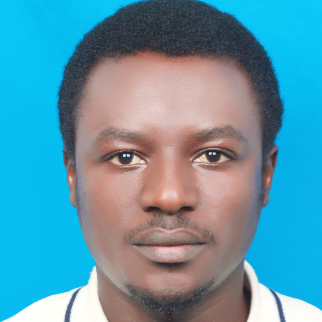
Kamal A. Abubakar
Work place: Department of Materials and Metallurgical Engineering, Nigerian Army University Biu, Borno, Nigeria
E-mail: kamalnice1@gmail.com
Website:
Research Interests: Software
Biography
Kamal Abubakar Abubakar received his B.Eng. degree in Electrical Engineering from Bayero University, Kano in 2012 and M.Eng. Degree in Mechatronics and Automatic Control Engineering from the Universiti Teknologi Malaysia in 2016. He has been involved in research works at Mechatronics Systems Laboratory and Centre for Artificial Intelligence and Robotics (CAIRO) in Universiti Teknologi Malaysia on Robotics, Control, Artificial Intelligence, Neural Network and Mechatronics system design. He has been a lecturer at the Department of Materials and Metallurgical Engineering, Nigerian Army University Biu, Borno, Nigeria, since February 2020. His main research interests include Vibration Control, Mechatronics Systems Design, Control System Design, Robotics and Software development.
Author Articles
Off-line Handwritten Signature Verification System: Artificial Neural Network Approach
By N. M. Tahir Adam N. Ausat Usman I. Bature Kamal A. Abubakar Ibrahim Gambo
DOI: https://doi.org/10.5815/ijisa.2021.01.04, Pub. Date: 8 Feb. 2021
Nowadays, it is evident that signature is commonly used for personal verification, this justifies the necessity for an Automatic Verification System (AVS). Based on the application, verification could either be achieved Offline or Online. An online system uses the signature’s dynamic information; such information is captured at the instant the signature is generated. An offline system, on the other hand, uses an image (the signature is scanned). In this paper, some set of simple shaped geometric features are used in achieving offline Verification of signatures. These features include Baseline Slant Angle (BSA), Aspect Ratio (AR), and Normalized Area (NA), Center of Gravity as well as the line’s Slope that joins the Center of Gravities of the signature’s image two splits. Before the features extraction, a signature preprocessing is necessary to segregate its parts as well as to eliminate any available spurious noise. Primarily, System training is achieved via a signature record which was acquired from personalities whose signatures had to be validated through the system. An average signature is acquired for each subject as a result of incorporating the aforementioned features which were derived from a sample set of the subject’s true signatures. Therefore, a signature functions as the prototype for authentication against a requested test signature. The similarity measure within the feature space between the two signatures is determined by Euclidian distance. If the Euclidian distance is lower than a set threshold (i.e. analogous to the minimum acceptable degree of similarity), the test signature is certified as that of the claiming subject otherwise detected as a forgery. Details on the stated features, pre-processing, implementation, and the results are presented in this work.
[...] Read more.Other Articles
Subscribe to receive issue release notifications and newsletters from MECS Press journals